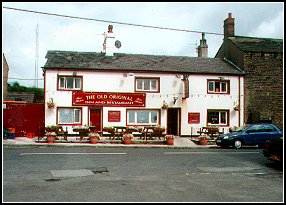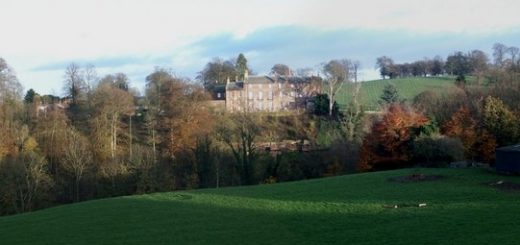Aokigahara Forest
Aokigahara forest lies at the foot of Mount Fuji and is reputed to be one of the most haunted locations in Japan and is probably the second most popular place in the world to commit suicide after the Golden Gate Bridge in San Francisco.
The forest also known as Sea of Trees sits on volcanic rock and has several rocky caverns which get covered in ice during the winter. Two of the caves within the forest are popular tourist attractions known as the Wind Cave and Ice Cave.
Each year local volunteers and police make a “body hunt” throughout the forest. This annual event has taken place since 1970. They mark their search areas out with plastic tape which gets left behind and therefore adds to the litter in the Aokigahara. It has also been suggested that hikers sometimes mark their routes with plastic tapes when heading off into the more inaccessible areas.
Approximately 30 suicides are found each year, though in 2002 a total of 78 bodies were discovered. The previous record had been 73 bodies which was back in 1998. Sometimes bodies are found deeper in the forest away from the well used tracks. These bodies are usually older and usually scattered after having drawn forest animals.
It is suggested that given the amount of suicides in the forest, Aokigahara is like a treasure trove littered with wallets and credit cards etc. The film director Takimoto Tomoyuki found 370,000 yen (£2783) in a wallet whilst scouting for locations to make his film Ki no Umi (2004) which was about four people deciding to die in the forest.
The following quotes are from an article by Ryann Connell in Mainichi Daily News, 2001 and I think they sum up the feelings of those connected to Aokigahara and the suicides.”We want people to forget Aokigahara for a little while,” a local police officer says. “Every time it’s mentioned, it starts off a chain reaction and we end up with more suicides,” a tourist industry employee says before producing a booklet that details why potential suicides taken into protective custody before they successfully killed themselves headed for Aokigahara. “Look. Nearly every case says they learned about the area from TV, newspapers or books. By ending the searches, we’re throwing back the problem into society’s face.” A man working in a souvenir store voices the frustrations felt by many locals. “It bugs the hell out of me that the area’s famous for being a suicide spot,” he says. “There’s nothing worse than seeing kids who come here go home with that impression.” “I’ve seen plenty of bodies that have been really badly decomposed, or been picked at by wild animals,” a local police officer says. “There’s nothing beautiful about dying in there.” “We have to pay for the bodies to be disposed,” says Takatoshi Kobayashi, mayor of Narusawa, one of three villages bearing the brunt of cleaning up the suicides. “Doing so keeps us away from the work we should be doing. (Suicides) ruin the area’s name. We’re all for an end to the searches.”
It is said that magnetic iron deposits under the forest interfere with compasses causing many some visitors to get totally lost, however it has been reported that the US Military and the Japanese Self Defence Force using lensatic compasses don’t seem to have any problems.
Ghosts
The forest said to be haunted by restless ghosts called Yurei that are meant to torment those who enter Aokigahara. I don’t know if any actual haunting type phenomena have been witnessed or whether it is folklore built up around a large death toll. Aside from the suicides, in and in the 19th century, Aokigahara was one of the places that poor families would abandon the very young and the very old they cold not afford to look after.




Recent Comments